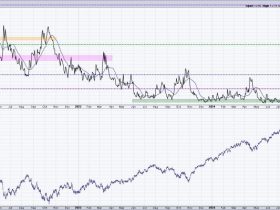Dollar stores have long been a preferred destination for bargain hunters seeking affordable goods. However, recent trends indicate that dollar stores are facing challenges in capturing the loyalty of their bargain-seeking clientele. Several factors contribute to these struggles, shedding light on the changing landscape of consumer preferences and economic dynamics.
One significant reason for the difficulties faced by dollar stores is the competitive pricing strategies employed by larger retail chains. Retail giants such as Walmart and Target have increasingly focused on offering low-cost products, directly encroaching upon the territory traditionally dominated by dollar stores. By leveraging their vast resources and scale, these retail powerhouses can undercut dollar stores in pricing while offering a wider range of products and a more pleasant shopping experience.
Furthermore, the rise of online shopping has revolutionized the way consumers approach bargain hunting. Online platforms like Amazon and eBay provide a convenient and often cheaper alternative for budget-conscious shoppers to compare prices and access a broad selection of products without leaving their homes. The convenience of online shopping, coupled with the proliferation of e-commerce, has eroded the competitive advantage once enjoyed by brick-and-mortar dollar stores.
Another factor contributing to the struggles of dollar stores is the changing demographics and shifting consumer attitudes. As millennials and Gen Z consumers make up a growing portion of the market, their shopping preferences and values differ significantly from previous generations. These younger consumers prioritize sustainability, ethical sourcing, and product quality over just low prices, leading them to seek alternatives to dollar stores that align with their values.
Additionally, the economic impact of the COVID-19 pandemic has further exacerbated the challenges faced by dollar stores. The economic downturn and rising inflation have put pressure on consumers’ budgets, prompting them to prioritize essential purchases over discretionary spending. In such a constrained economic environment, dollar stores face the dilemma of balancing their pricing strategy to remain competitive while not compromising on product quality and selection.
In response to these challenges, dollar stores are exploring various strategies to adapt to the evolving retail landscape. Some dollar store chains are expanding their product offerings to include higher-quality items and branded products to appeal to a broader customer base. Others are focusing on enhancing the in-store shopping experience by improving store layouts, cleanliness, and customer service to differentiate themselves from competitors.
Despite the obstacles they face, dollar stores remain a staple in many communities, offering affordable options for essential goods and everyday items. As they navigate the changing retail environment and evolving consumer preferences, dollar stores will need to innovate and adapt to stay relevant and competitive in the bargain-hunting market. By understanding the factors contributing to their struggles and taking proactive steps to address them, dollar stores can continue to attract and retain bargain-hunting customers in the years to come.












